In the figure shown neglecting friction and mass of pulley, what is the acceleration of mass B ?

g3
5g2
g
2g5
The correct Answer is:D
From constraint relation , if acceleration of mass B is a then acceleration of mass A will be a/s:
FBD of A:
T−mg=ma2 …….(i)
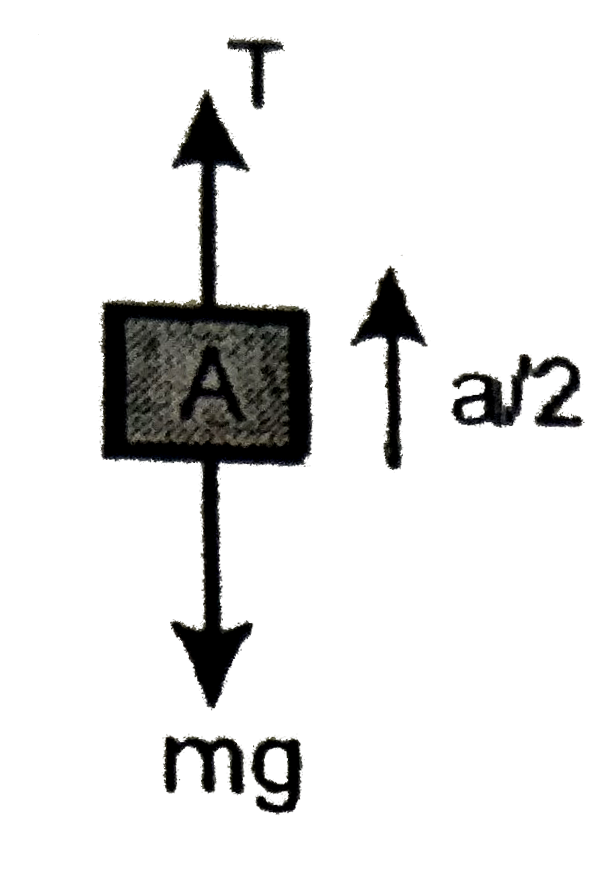
FBD of B:
mg−T2=ma …..(ii)
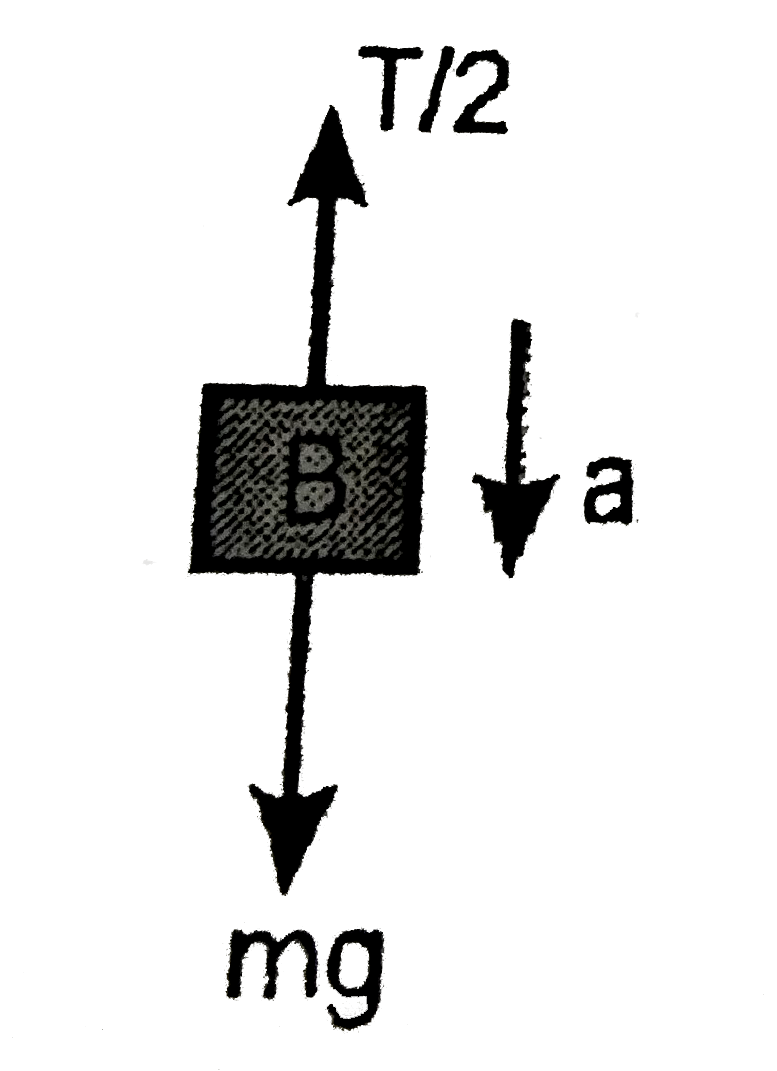
From (i)&(ii)
a=2g5
Topper's Solved these Questions
- DAILY PRACTICE PROBLEMSBOOK - RESONANCE ENGLISHCHAPTER - DAILY PRACTICE PROBLEMSEXERCISE - TRUE/FALSE
2 Videos
- DAILY PRACTICE PROBLEMSBOOK - RESONANCE ENGLISHCHAPTER - DAILY PRACTICE PROBLEMSEXERCISE - dpp 25
5 Videos
- DAILY PRACTICE PROBLEMSBOOK - RESONANCE ENGLISHCHAPTER - DAILY PRACTICE PROBLEMSEXERCISE - dpp23
8 Videos
- CURRENT ELECTRICITYBOOK - RESONANCE ENGLISHCHAPTER - CURRENT ELECTRICITYEXERCISE - Exercise
53 Videos
- ELASTICITY AND VISCOCITYBOOK - RESONANCE ENGLISHCHAPTER - ELASTICITY AND VISCOCITYEXERCISE - Advanced Level Problems
9 Videos
Similar Questions
Study in fig. and answer the following questions accordingly. Neglect all friction and masses of the pulleys.

What is the acceleration of Block A?
View SolutionTwo block of masses m1 and m2 are in equilibrium. The block m2 hangs from a fixed smooth pulley by an inextensible string that is fitted with a light spring of stiffness k as shown in fig. Neglecting friction and mass of the string, find the acceleration of the bodies just after the string S is cut.
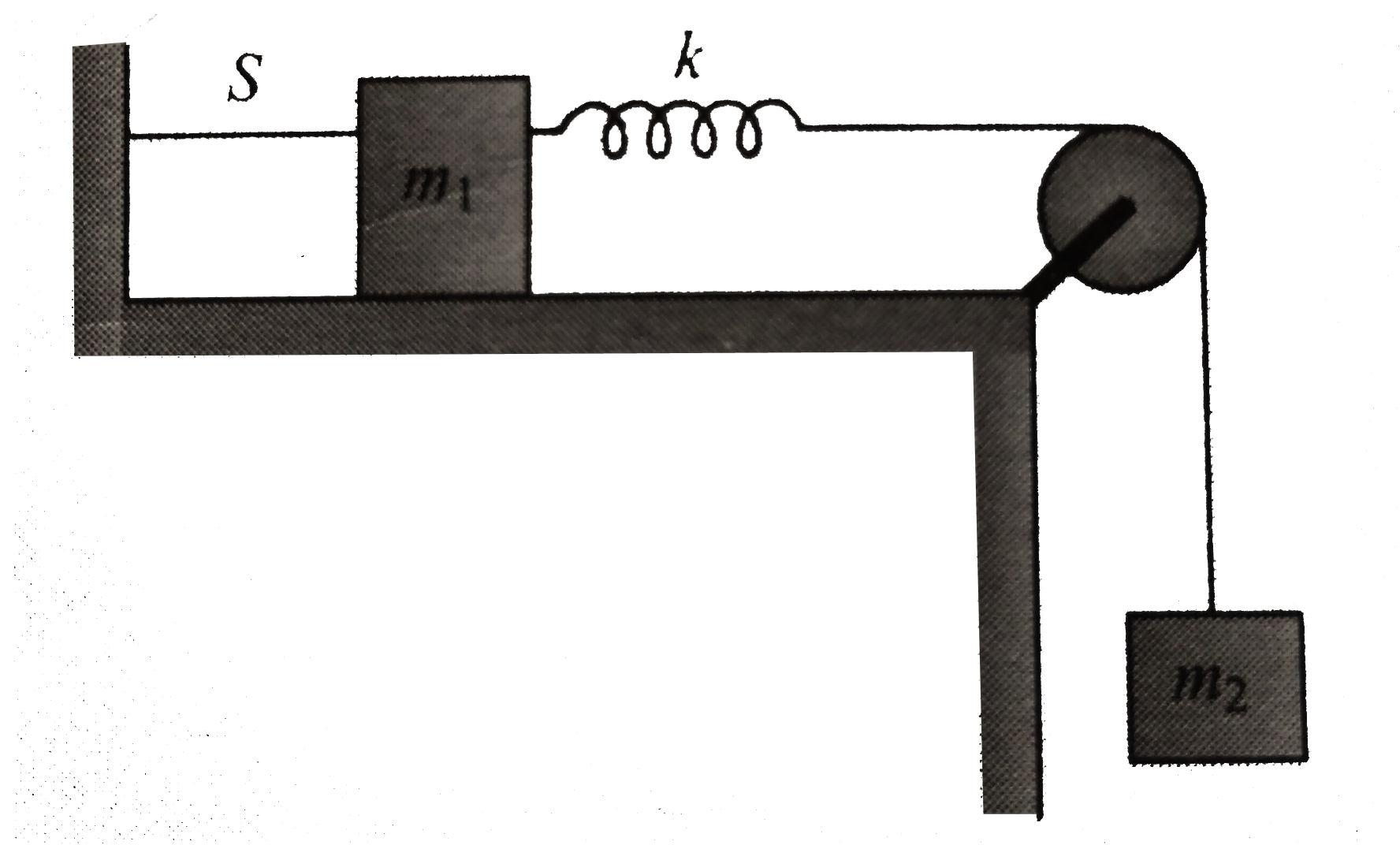
View SolutionIf the string & all the pulleys are ideal, acceleration of mass m is :-
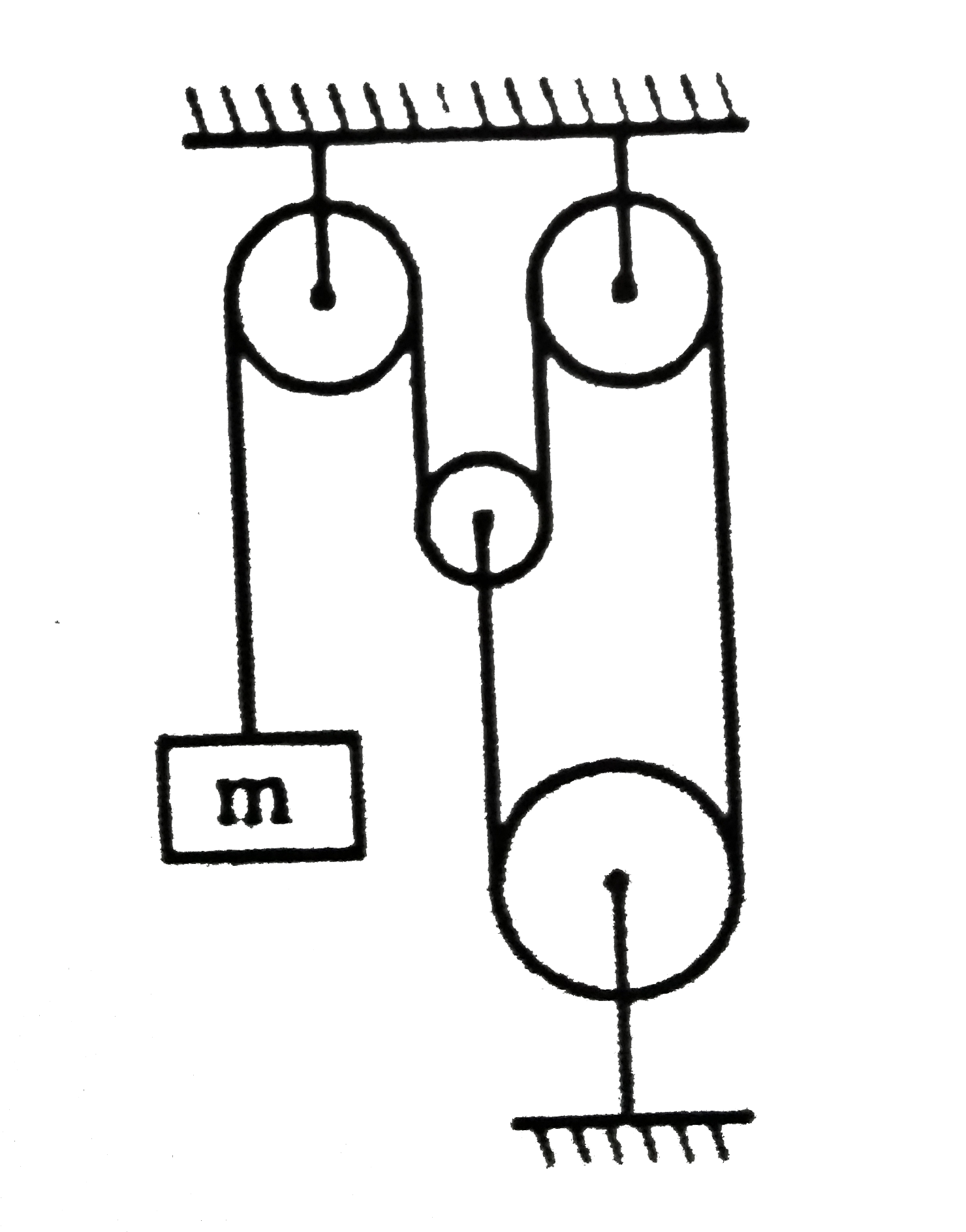
View SolutionA pulley is connected to the ceiling of an elevator by a massless rod. Two masses are connected as shown in figure. There is sufficient friction in the pulley axis. The acceleration of block w.r.t. earth is
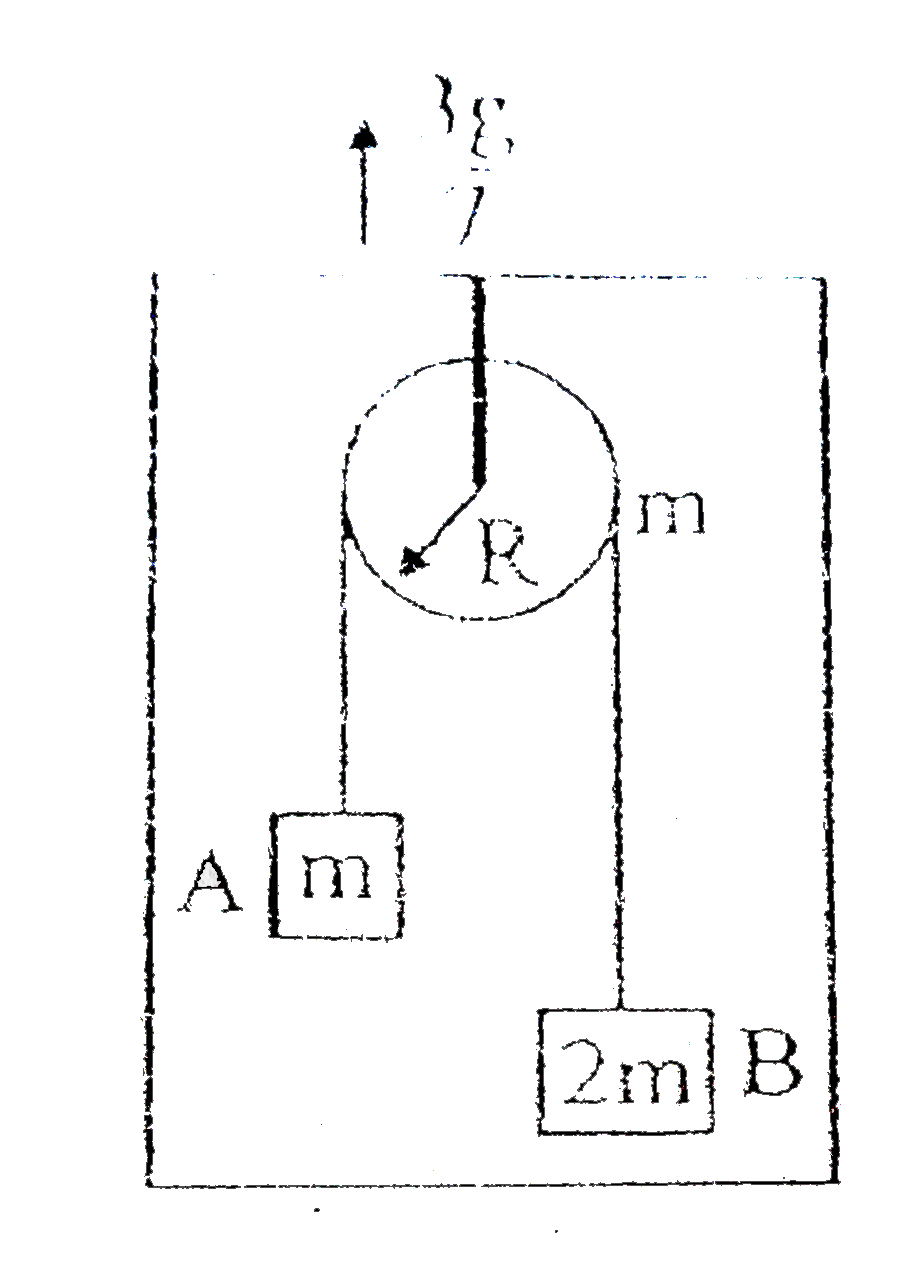
View SolutionFind the stretch in the springs shown in figure. The respective data are given in the figure. The friction and masses in pulleys are negligible. Find the extension in spring?
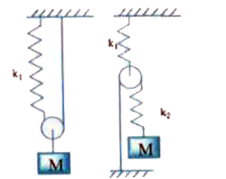
View SolutionTwo masses as shown are suspended from a massless pulley. Calculate the acceleration of the 10 kg mass when masses are left free
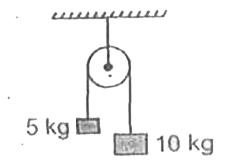
View SolutionA block B is pulled by a force of 18 N applied to a light pulley as shown in the figure. If the coefficient of friction is 0.4 and the acceleration of the block is 0.5 ms−2 , the mass of the block is (g=10m/s2)

View SolutionTwo masses as shown are suspended from a massless pulley. Calculate the acceleration of the system when masses aere left free:
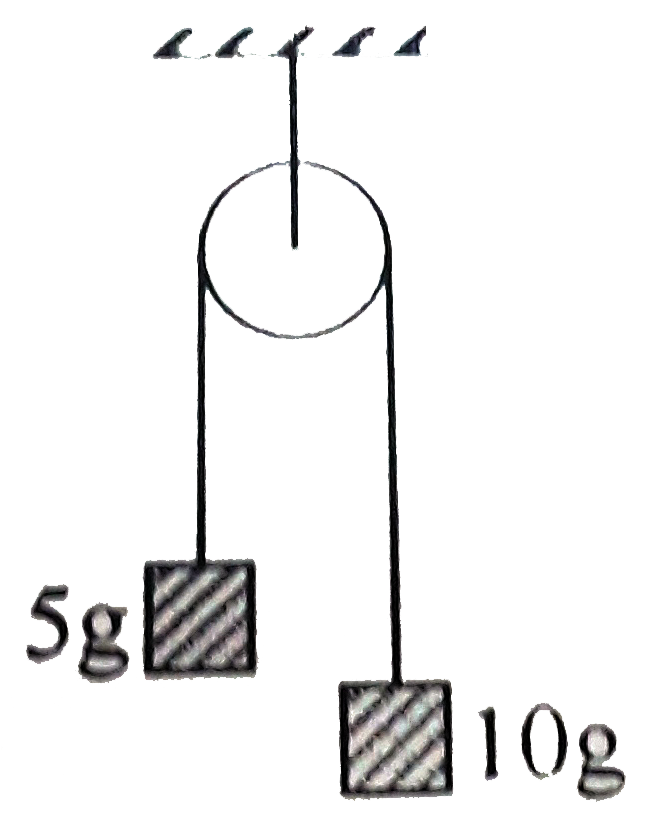
View SolutionTwo masses as shown are suspended from a massless pulley. Calculate the acceleration of the system when masses are left free.
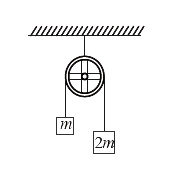
View SolutionConsider the situation shown in figure. Both the pulleys and the strings are light and all the surfaces are frictionless. Calculate
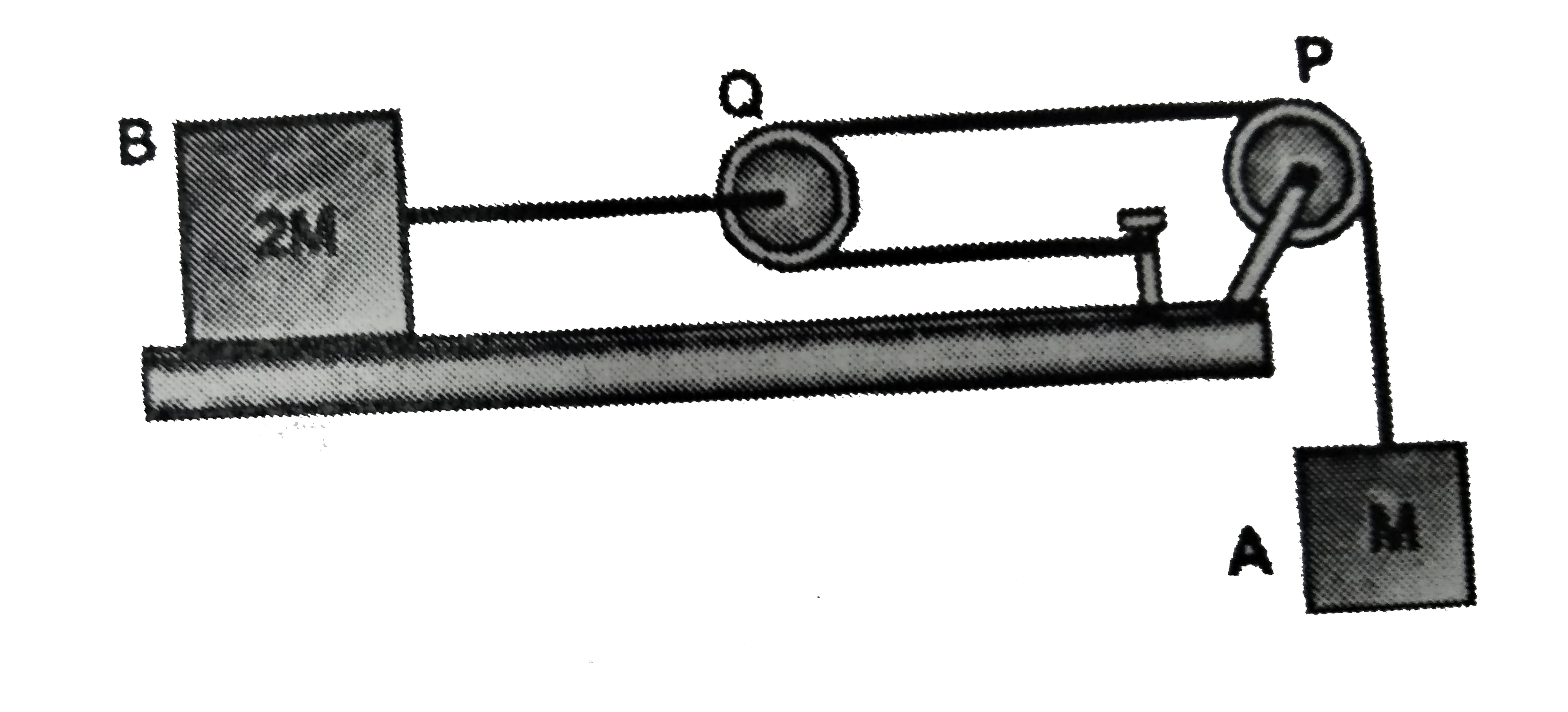
(a) the acceleration of mass M,
(b) tension in the string PQ and
(c ) force exerted by the pulley P.
View Solution
